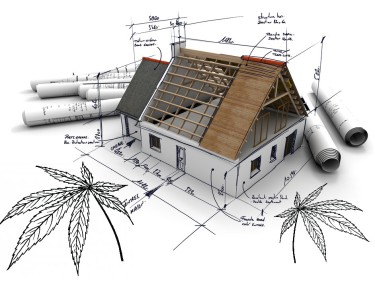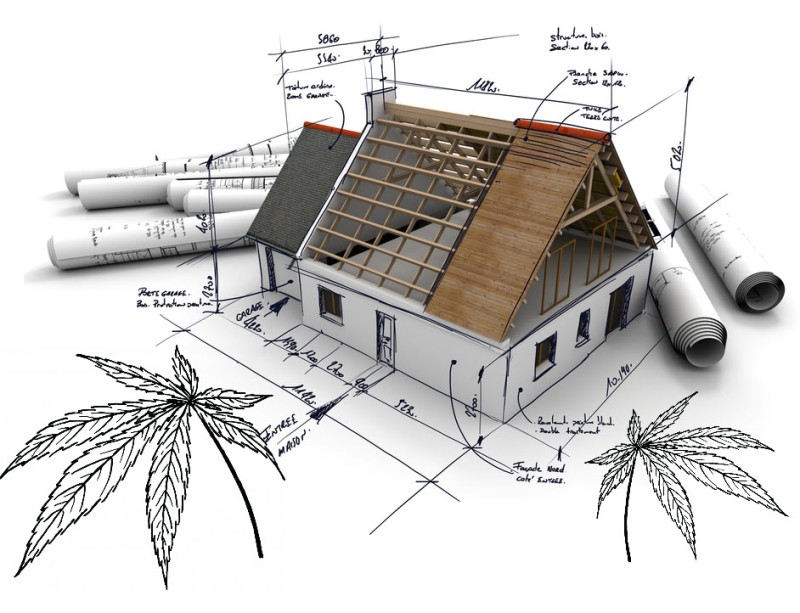
During a public hearing in Louisville, Kentucky, which was supervised by the International Code Council (ICC), hemp construction materials were formally accepted for inclusion in the US model residential building code.
The International Code Council (ICC) concluded the conference by closing the window for public comments on hemp-lime (hempcrete) construction, which will be included as an appendix in the future 2024 International Residential Code (IRC). The appendix's inclusion in the new code was approved in this last phase. Hemp-Lime (Hempcrete) will appear in "Appendix BA" of the new code, which will be released in 2023. In 49 of the 50 U.S. states, the IRC serves as the foundation for the residential code (Wisconsin is the only exception). Townhouses, single-family homes, and multi-family homes are all covered.
THE USE OF HEMPCRETE
Hempcrete is a long-lasting, carbon-sequestering, mold- and pest-repellent, fire-resistant wall assembly made of fibrous insulation from hemp stalks or "shiv" and lime binder. Supporters claim that hempcrete is a superior zero-carbon construction material that can reduce the carbon footprint of the construction sector because hemp polymerizes carbon in a building's walls.
Hempcrete has been approved by the IRC as a non-structural wall infill technique that uses technology comparable to that used in the construction of cob and straw bale walls, according to the committee. The decision would simplify the review process for designs for hempcrete authorization by the building departments." The committee further stated that this offers prescriptive guidelines for a sustainable solution for wall infill.
Without requiring engineering, Appendix BA will prescriptively permit the usage of hemp-lime in areas with low seismic risk. A design will be engineered for areas with great danger.
Despite the fact that hemp-lime has received a high fire resistance rating in European tests, more testing is required, specifically using ASTM E 119 or UL 263 testing standards, in order to rate its fire resistance in the IRC. Hemp-lime was heated to a maximum of 575 degrees Fahrenheit in 2020 as part of smoke buildup and flame spreading tests carried out by Hempitecture, Inc. under ASTM E 84. Hemp-lime obtained the lowest (best) values during the test, which is necessary for any insulation infill materials.
CATCHING UP WITH EUROPE
Industrial hemp remained prohibited in the US until the 2018 Farm Bill's passage. Nonetheless, hempcrete insulation was unofficially utilized as insulation in Europe for approximately 30 years without being formally incorporated into US construction codes.
The non-profit foundation of the US Hemp Building Association submitted the application for authorization after it had raised over $50,000 and spent countless hours working with a panel of experts, such as civil engineers, hemp-lime contractors from the US and Europe, architects, and code experts who assisted straw bale builders in obtaining certification in accordance with the residential housing codes of 2018.
President of USHBA Henry Gage, Jr., commended Jacob Waddell, the departing interim executive director, for raising funds and overcoming challenges to advance the ICC application toward certification. In an email, Gage stated he would like to honor the efforts of Waddell for his leadership. With this vote, the hemp-lime building has entered the mainstream, ushering in a new period of financing, architecture, research, and construction, said Gage.
Supporters of hempcrete projects asserted that including hempcrete in the US construction rules would reduce paperwork and accelerate projects.
Unless officially authorized by a state or local authority, IRC appendices are voluntary, according to architect Martin Hammer, the proposal co-author, who also contributed to the creation of four previous IRC code appendices. Engineers and construction companies embarking on a hempcrete project could still be expected to get the local building department's approval as an alternative material and method before the official implementation of the 2024 Appendix BA.
Hammer added that, on the other hand, still to this day, this proper ICC building code appendix can be offered to a local construction official for usage on a contract basis.
According to civil engineer Anthony Dente of Berkeley, California-based Verdant Structural Engineers, who provided the structural engineering data for the plan, code induction of natural construction materials of any type is extremely major news. In comparison to other traditional materials, these forms of codes are less prevalent globally. The IRC Hemp-Lime Appendix is a fantastic foundational document with several really exciting prospective growth areas in the future, said Dente.
ACCEPTANCE OF HEMPCRETE IS A GROUND-BREAKING ACHIEVEMENT
The accreditation was a game-changing accomplishment, according to Ana Konopitskaya of CoExistBuild, a Pennsylvania-based architect who contributed to the application. She emailed HempBuildmag to say that it is crucial, in her capacity as an architect, to include hemp-lime in the building code. It will make it possible for architects who are concerned with sustainability, like myself, to prescribe this material in any US town, she continued.
The US building rules' inclusion of hemp construction, according to Matt Marino, a hemp builder from Homeland Hempcrete in North Dakota, helped lend validity to the trade. We can standardize their delivery using this tool, he continued. I'm excited to see what direction this industry may go because this is just the beginning.
Builders of single-family homes will benefit from hempcrete's inclusion in residential codes, but it still must be permitted under the model International Building Code (IBC), which guides all residences not covered by the IRC. This will allow hempcrete to be used in commercial buildings without requiring a variance. In 2025, submissions will be accepted for the IBC, which is subject to renewal every three years.
Voting members of the ICC committee are employed by governmental organizations tasked with ensuring the health and safety of the general public and, in the words of the group, have no financial interest in the result.
BOTTOM LINE
Hempcrete or hemp-line will finally ‘officially’ be used as a building material in the construction of homes in the United States after years of unofficial use. Lots of builders favor the material due to its fire, pest, and mold-resisting characteristics and, of course, its sturdiness. That, accompanied by its carbon sequestering properties, make hemp-lime a very useful material to engineers and builders alike. However, it won't be fully official till the 2024 implementation of appendix BA.






